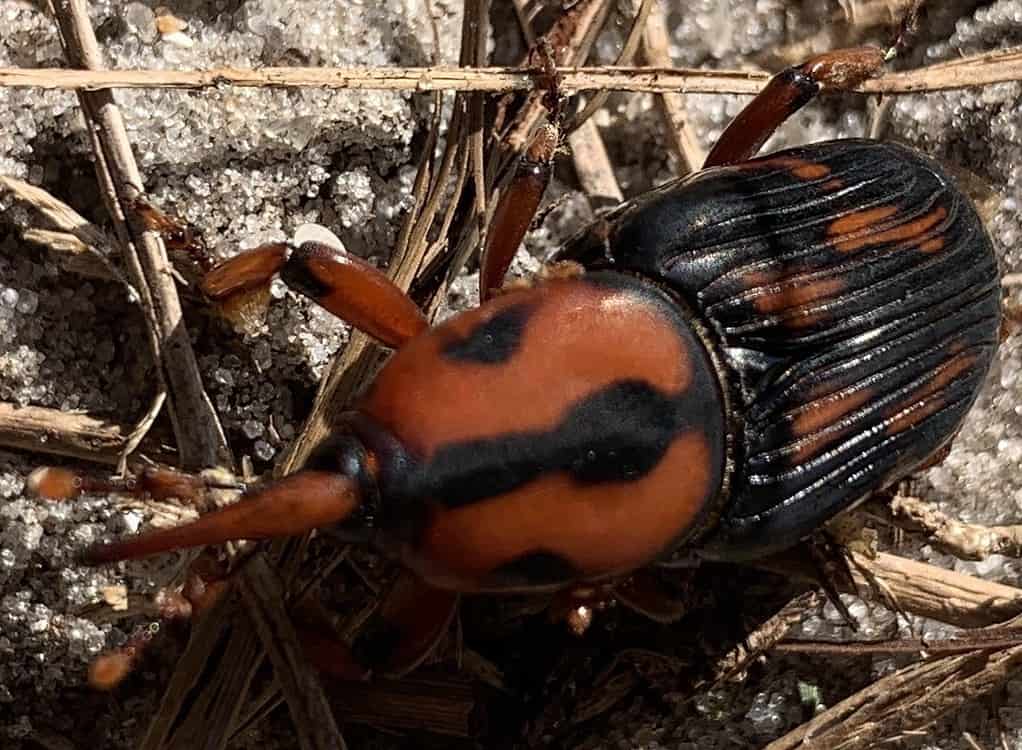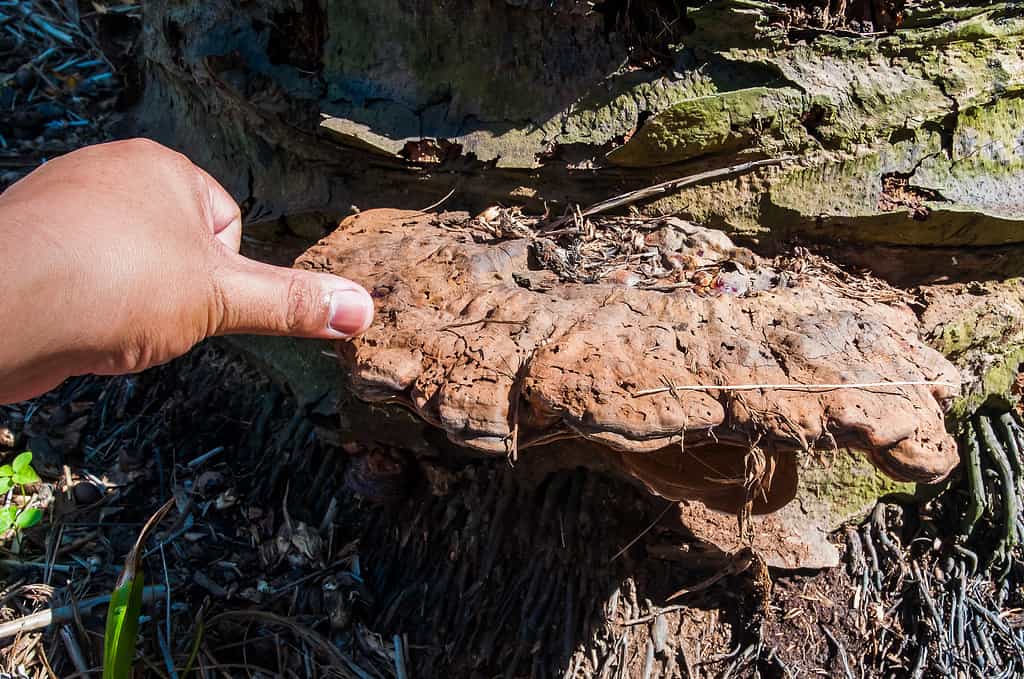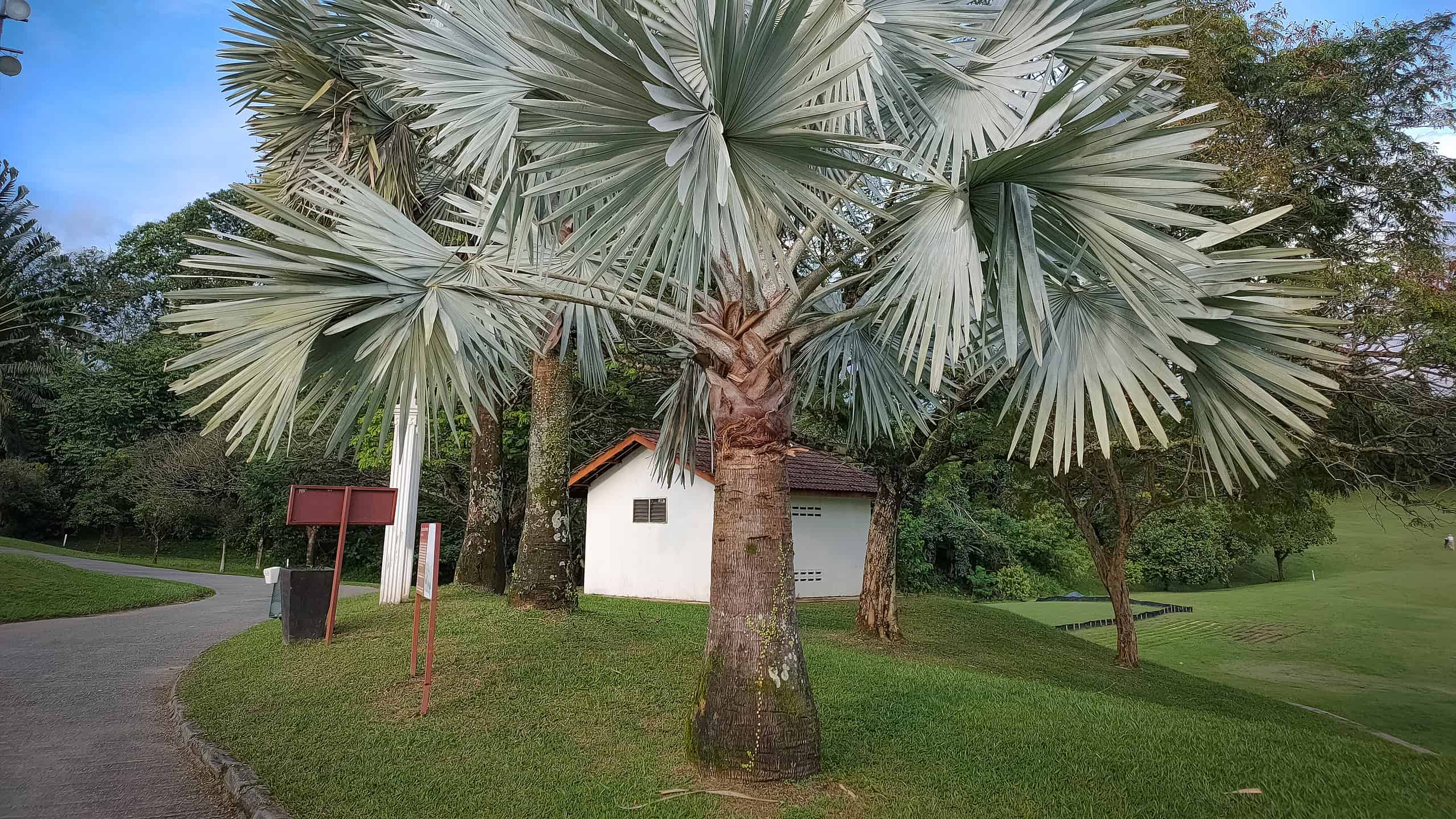The Bismarck palm is a stately and sought-after landscaping tree. Its great stature, wide crown, and stunning frond color make it a popular addition to warm-weathered, open landscapes. They are beautiful at all of their life stages. When young and still short, Bismarcks provide ample privacy with their wide, spreading fronds. As they age, these palms transition into a shade-providing role.
If you’re considering growing your own Bismarck palm at home, this guide will give you a great head start. Below, we’ll talk about the growing conditions that your palm will need to thrive, as well as some signs of trouble that you’ll want to look out for.
| Bismarck Palm Tree | ||
|---|---|---|
| Botanical Name | Bismarckia nobilis | |
| Common Name | Bismarck palm | |
| Sunlight | Full sun is best but will grow in partial sun. | |
| Water | Regular watering. Keep soil moist but not wet. | |
| Soil Conditions | Must be well-draining. Sandy loam soils are best. | |
| Hardiness | Cold hardy down to USDA zone 10A (30°F). May survive down to 9B if protected. | |
| Beginner Friendly? | Yes. | |
| Indoors or Outdoors? | Outdoors. |
What Is a Bismarck Palm?

Otto von Bismarck, the first chancellor of the German empire, inspired the name of the Bismarck palm tree.
©Vipul1989/Shutterstock.com
The Bismarck palm, Bismarckia nobilis, is named after the first chancellor of the German empire, Otto von Bismarck. This large palm species is endemic to Madagascar but has become a popular landscaping palm in many countries.
These palms are relatively fast growers, increasing in height by up to 3 feet per year. At maturity, the Bismarck palm can reach heights of about 60 feet. Each of its compounds, waxy leaves is called a frond and is considered costapalmate. This describes a midway point in shape between pinnate, or feather-like, and palmate, which means hand-like. Bismarck fronds are a gorgeous, muted gray-green or pale blue and can grow up to 10 feet wide. For a palm, its fronds grow relatively quickly. It can take a few years for a frond to reach its maximum size.
In the late spring or summer, these palms produce long, pendant-like inflorescences that are covered with small brown flowers. Once flowers mature, they produce small round or bumpy fruits that each contain a single seed.
How to Grow a Bismarck Palm

With its large size and lovely colors, the Bismarck palm tree is a popular choice for landscaping.
©NizamRahman83/Shutterstock.com
The Bismark palm is not used for very many things outside of landscaping as its striking color, size, and texture make it ideal for this purpose. If you’d like to grow your own Bismarck palm, consider that their mature crown can spread to about 16 feet in width. While these palms do grow very tall, it can take many years. In the meantime, the large fronds may damage housing or other landscaping if planted too closely. Make sure there is enough clearance.
You should also make sure that you live in an area where temperatures generally stay above freezing. Although Bismarcks can tolerate short periods of near-freezing temperatures, cold weather can and likely will damage foliage.
The general growing guidelines below will help you ensure that your plant has everything it needs to thrive.
Sunlight
These huge palms need many hours of sun to harvest the energy they need to grow properly. While full sun is best, they can also tolerate partial sun.
Water
Luckily for those that experience the occasional drought, the Bismarck palm can tolerate periods of infrequent watering. To keep your palm at its healthiest, however, you should water your palm regularly. Keep soil moist and allow the surface to dry slightly before watering again. Do not allow puddles of standing water to form, as they prevent oxygen from penetrating the soil. Without oxygen, your plant’s roots may fall victim to anaerobic microbes that cause root rot.
Soil Conditions
The Bismarck palm is tolerant of a range of soil types but requires that its growing location drains well. They grow well inland as well as in coastal areas and are fairly tolerant of salt spray on both leaves and soil. Your palm will thrive in soils that are close in consistency to sandy loam. This type of soil is very well-draining but also contains enough silt and clay to help prevent common nutrient and mineral deficiencies.
You should always make sure that you cover your plant’s soil with a couple of inches of mulch. This helps prevent soil from drying out too quickly and also fosters aerobic microbial communities that are vital for your plant’s health. Over time, these microbes break down organic matter like mulch and compost into nutrients that your plants can use. When applying mulch, be sure to avoid piling it up around the trunk of your palm. Too much can prevent oxygenation and damage your plant.
Fertilization
These palms, like other palm species, are susceptible to potassium, magnesium, and manganese deficiencies. If you live in an area with particularly sandy or weathered soil, like many areas of Florida, your soil may be lacking in these crucial nutrients.
To make sure your plant is doing well, you should monitor its leaves for color changes. Yellowing leaves and spotting that becomes translucent signals that your palm is struggling for potassium. If your soil is lacking in manganese, you may notice shriveling, necrotic leaf tips. You may also notice yellow or necrotic streaking down your palm’s leaves. Palms with magnesium deficiencies will have older leaves with green centers and yellow margins.
The best way to detect soil deficiencies, however, is to have your soil tested before you begin planting. You can usually have this done cheaply at your local garden center, agricultural supply, or college extension office.
Pruning Your Bismarck Palm
The fronds of the Bismarck palm stay rigid and straight throughout their useful life. However, like any evergreen, they will eventually be shed to make space for new leaf growth. When a frond has died, you should cut its petiole, or leaf stalk, close to the trunk.
Pruning can be done in any season. However, it is important to avoid removing fronds until they have died completely so as not to cause harm to the plant. If you cut them off early, you prevent your palm from reabsorbing the vital potassium contained in the leaves. Living leaves also release volatiles that attracts insect pests when damaged.
Pests and Disease
Like any plant, your Bismarck palm may struggle with pests or diseases at some point during its life. Below are a couple of organisms that can cause serious problems for your plant. Remember, stressed plants cannot defend themselves as well as healthy ones. You can help your plant fend off trouble by ensuring that it has everything it needs to stay healthy.
Palmetto Weevil (Rhynchophorus cruentatus)

Bismarck palm trees release a chemical signal when their fronds are damaged. That chemical signal attracts palmetto weevils.
The palmetto weevil is the largest weevil species in North America and is native to Florida. They can vary greatly in color and size, but all have a very long snout-like mouth part called a rostrum. The insect uses its rostrum to eat and dig holes in the crown of the palm where it will eventually lay its eggs. Once the eggs hatch, the resultant larvae begin to feed on the plant’s internal tissues and eventually damage the main growth point of the palm.
Weevil infestations are difficult to detect early but will generally cause new and young leaves to grow improperly. Developed leaves may begin to yellow and droop. Eventually, they will collapse. Advanced infestations can cause the entire crown of the palm to fall over.
Palmetto weevils are particularly attracted to the chemical signals that Bismarck palms release when their fronds are damaged. Fresh wounds give these insects easy access to living crown tissue. This is one reason why it is important to avoid pruning fronds before they have completely died back.
Ganoderma Butt Rot

Unfortunately, there is no cure for
Ganodermabutt rot. Once a plant is infected, it will inevitably die.
©RAMLAN BIN ABDUL JALIL/Shutterstock.com
This surreptitious fungal infection is caused by a species of the genus Ganoderma that is closely related to the reishi mushroom. Over time, the butt rot fungus digests the tissues inside the base of the palm’s trunk. The infection progresses relatively slowly but can cause the tree to become weak and unstable. Late in the progression, the fungus may produce a white and brown, bracket-shaped fruiting body from the base of the trunk. Unfortunately, this disease is not treatable and will inevitably kill the host plant. There are no specific prevention measures to take against Ganoderma butt rot other than the removal of infected trees.
Thank you for reading! Have some feedback for us? Contact the AZ Animals editorial team.








